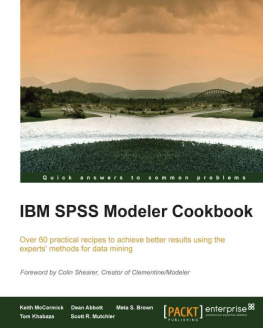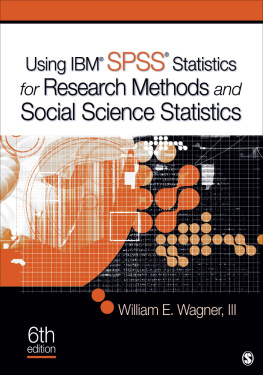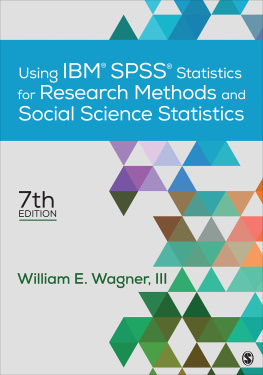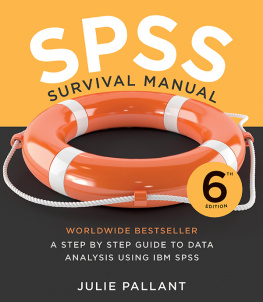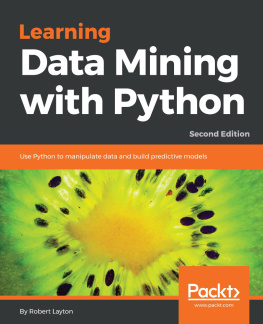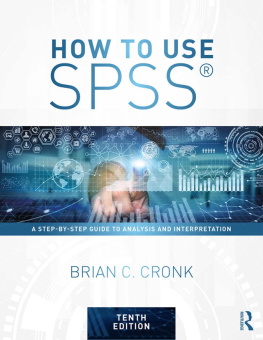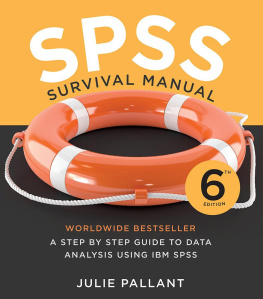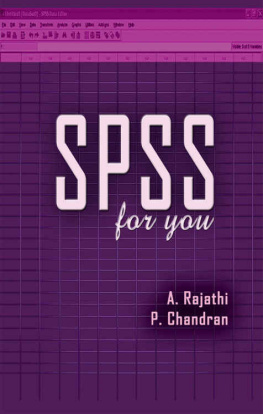McCormick - IBM SPSS Modeler cookbook
Here you can read online McCormick - IBM SPSS Modeler cookbook full text of the book (entire story) in english for free. Download pdf and epub, get meaning, cover and reviews about this ebook. City: Birmingham, UK, year: 2013, publisher: Packt Publishing, genre: Politics. Description of the work, (preface) as well as reviews are available. Best literature library LitArk.com created for fans of good reading and offers a wide selection of genres:
Romance novel
Science fiction
Adventure
Detective
Science
History
Home and family
Prose
Art
Politics
Computer
Non-fiction
Religion
Business
Children
Humor
Choose a favorite category and find really read worthwhile books. Enjoy immersion in the world of imagination, feel the emotions of the characters or learn something new for yourself, make an fascinating discovery.
IBM SPSS Modeler cookbook: summary, description and annotation
We offer to read an annotation, description, summary or preface (depends on what the author of the book "IBM SPSS Modeler cookbook" wrote himself). If you haven't found the necessary information about the book — write in the comments, we will try to find it.
Over 60 practical recipes to achieve better results using the experts methods for data mining
Overview
- Go beyond mere insight and build models than you can deploy in the day to day running of your business
- Save time and effort while getting more value from your data than ever before
- Loaded with detailed step-by-step examples that show you exactly how its done by the best in the business
In Detail
IBM SPSS Modeler is a data mining workbench that enables you to explore data, identify important relationships that you can leverage, and build predictive models quickly allowing your organization to base its decisions on hard data not hunches or guesswork.
IBM SPSS Modeler Cookbook takes you beyond the basics and shares the tips, the timesavers, and the workarounds that experts use to increase productivity and extract maximum value from data. The authors of this book are among the very best of these exponents, gurus who, in their brilliant and imaginative use of the tool, have pushed back the boundaries of applied analytics. By reading this book, you are learning from practitioners who have helped define the state of the art.
Follow the industry standard data mining process, gaining new skills at each stage, from loading data to integrating results into everyday business practices. Get a handle on the most efficient ways of extracting data from your own sources, preparing it for exploration and modeling. Master the best methods for building models that will perform well in the workplace.
Go beyond the basics and get the full power of your data mining workbench with this practical guide.
What you will learn from this book
- Use and understand the industry standard CRISP_DM process for data mining.
- Assemble data simply, quickly, and correctly using the full power of extraction, transformation, and loading (ETL) tools.
- Control the amount of time you spend organizing and formatting your data.
- Develop predictive models that stand up to the demands of real-life applications.
- Take your modeling to the next level beyond default settings and learn the tips that the experts use.
- Learn why the best model is not always the most accurate one.
- Master deployment techniques that put your discoveries to work making the most of your business most critical resources.
- Challenge yourself with scripting for ultimate control and automation - its easier than you think!
Approach
This is a practical cookbook with intermediate-advanced recipes for SPSS Modeler data analysts. It is loaded with step-by-step examples explaining the process followed by the experts.
Who this book is for
If you have had some hands-on experience with IBM SPSS Modeler and now want to go deeper and take more control over your data mining process, this is the guide for you. It is ideal for practitioners who want to break into advanced analytics.
McCormick: author's other books
Who wrote IBM SPSS Modeler cookbook? Find out the surname, the name of the author of the book and a list of all author's works by series.

